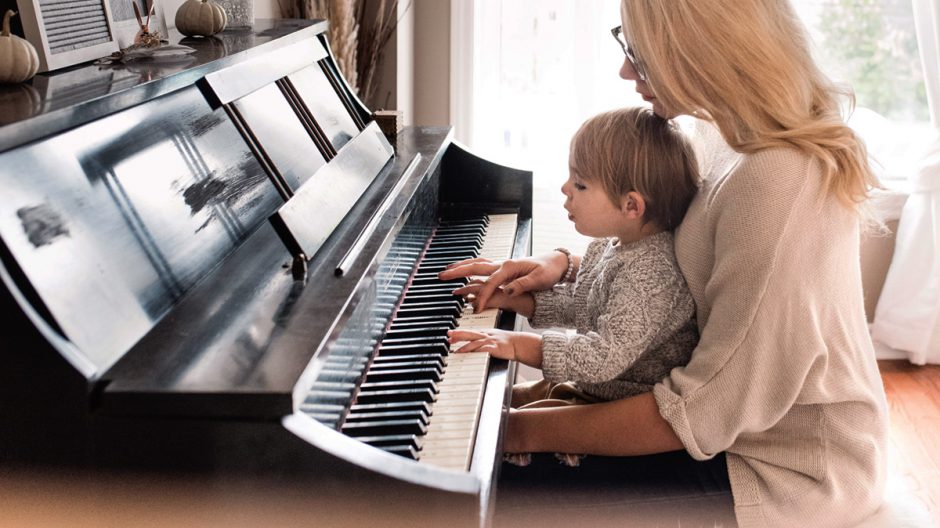 Cued In, The J.W. Pepper Blog, November 14, 2018
Cued In, The J.W. Pepper Blog, November 14, 2018
How Music Education Benefits the Brain

Falling Walls, November 9, 2015
Breaking the walls of neuroeducation

PBS News Hour, August 9, 2014Learning a musical instrument boosts language, reading skills

NPR: All Things Considered, September 2014
This Is Your Brain, This Is Your Brain On Music

We have partnered with schools around the country to study the impact of educational enrichment on neural development and learning.
ENRICHMENT IN UNDER-SERVED POPULATIONS:
Chicago Public High Schools
In conjunction with charter schools in the Chicago Public School system, we are undertaking a longitudinal study that investigates the impact of music and physical education on adolescent brain development.
Harmony Project
The Harmony Project, winner of the nation’s top honor for an arts program targeting high-need youth, provides music-based mentoring programs for high-need youth attending schools in Los Angeles neighborhoods. We are collaborating with the Harmony project to study learning, communication abilities, and biological development in grade-school children in LA participating in the mentoring program.
CLASSROOM LISTENING DEVICES:
Our joint project with the Hyde Park Day Schools in Chicago (private institutions for children with reading impairments) strives to identify the effects of classroom assistive listening devices on reading and communication abilities and their neural correlates in children with reading difficulties.
TOP TAKEAWAYS:
Making music fundamentally changes how the brain processes every sound.
The musician brain learns to automatically process harmonics, timing cues and pitch-changes better. This helps distinguish one sound from another and understand emotion in sound.
Musical training enhances language, reading ability, and listening skills.
Music education can offset the negative neural impact of poverty.
Music education leaves a lasting imprint on the hearing brain, long after music education has stopped.
It takes time to rewire the brain, ~2 years of music instruction.
PUBLICATIONS
- Hornickel J, Kraus N (2013) Unstable representation of sound: a biological marker of dyslexia. Journal of Neuroscience. 33(8): 3500-3504.
- Kraus N, White-Schwoch T (2020) The argument for music education. American Scientist. 108: 210-213
- Krizman J, Skoe E, Kraus N (2016) Bilingual enhancements have no socioeconomic boundaries. Developmental Science. 19(6): 881–891.
- Hornickel J, Zecker S, Bradlow AR, Kraus N (2012) Assistive listening devices drive neuroplasticity in children with dyslexia. Proceedings of the National Academy of Sciences. 109(41): 16731–16736.
- Kraus N, White-Schwoch T (2017) Neurobiology of everyday communication: what have we learned from music. The Neuroscientist. 23(3): 287-298.
- Kraus N (2016) Music, hearing, and education: from the lab to the classroom. ENT and Audiology News. 25(4): 94-96.
- Kraus N, Hornickel J (2012) Meaningful engagement with sound for strengthening communication skills. Auditory Processing Disorders: Assessment, Management and Treatment. 2nd edition: 689-717. Geffner D, Ross-Swain D, eds. Plural Publishing, San Diego, CA.
- Kraus N, Hornickel J, Strait DL, Slater J, Thompson EC (2014) Engagement in community music classes sparks neuroplasticity and language development in children from disadvantaged backgrounds. Frontiers in Psychology, Cognitive Science. 5(1403).
- Kraus N, Slater J (2016) Beyond words: how humans communicate through sound. Annual Review of Psychology. 67: 83–103.
- Kraus N, Slater J, Thompson EC, Hornickel J, Strait D, Nicol T, White-Schwoch T (2014) Music enrichment programs improve the neural encoding of speech in at-risk children. Journal of Neuroscience. 34(36): 11913-11918.
- Kraus N, Slater J, Thompson EC, Hornickel J, Strait DL, Nicol T, White-Schwoch T (2014) Auditory learning through active engagement with sound: Biological impact of community music lessons in at-risk children. Frontiers in Auditory Cognitive Neuroscience. 8(351).
- Kraus N, Smith SB (2017) Thinking outside the sound booth: Assessing and managing auditory processing disorder in an auditory-cognitive neuroscience framework. Geffner D, Ross-Swain, D (3rd Ed.) Auditory Processing Disorders: Assessment, Management, and Treatment. Plural Publishing
- Kraus N, Strait DL (2015) Emergence of biological markers of musicianship with school-based music instruction. Annals of the New York Academy of Sciences. 1337: 163-169.
- Neef NE, Müller B, Liebig J, Schaadt G, Grigutsch M, Gunter TC, Wilcke A, Kirsten H, Skeide MA, Kraft I, Kraus N, Emmrich F, Brauer J, Boltze J, Friederici AD (2017) Dyslexia risk gene relates to representation of sound in the auditory brainstem. Developmental Cognitive Neuroscience. 24: 63-71.
- Skoe E, Krizman J, Kraus N (2013) The impoverished brain: disparities in maternal education affect the neural response to sound. Journal of Neuroscience. 33(44): 17221–17231.
- Slater J, Skoe E, Strait D, O'Connell S, Thompson EC, Kraus N (2015) Music training improves speech-in-noise perception: longitudinal evidence from a community-based music program. Behavioural Brain Research. 291: 244-252.
- Slater J, Strait DL, Skoe E, O’Connell S, Thompson EC, Kraus N (2014) Longitudinal effects of group music instruction on literacy skills in low-income children. PLoS One. 9(11): e113383.
- Slater J, Tierney A, Kraus N (2013) At-risk elementary school children with one year of classroom music instruction are better at keeping a beat. PLoS One. 8(10): e77250.
- Strait DL, O'Connell S, Parbery-Clark A, Kraus N (2013) Biological impact of preschool music classes on processing speech in noise. Developmental Cognitive Neuroscience. 6: 51-60.
- Tierney A, Kraus N (2013) The ability to tap to a beat relates to cognitive, linguistic, and perceptual skills. Brain and Language. 124: 225–231.
- Tierney A, Krizman J, Kraus N (2015) Music training alters the course of adolescent auditory development. Proceedings of the National Academy of Sciences. 112(32): 10062-10067.
- Tierney A, Krizman J, Skoe E, Johnston K, Kraus N (2013) High school music classes enhance the neural processing of speech. Frontiers in Educational Psychology. 4(855).
- Woodruff Carr K, Tierney A, White-Schwoch T, Kraus N (2016) Intertrial auditory neural stability supports beat synchronization in preschoolers. Developmental Cognitive Neuroscience. 17: 76–82.
- Cunningham J, Nicol T, Zecker SG, Bradlow AR, Kraus N (2001) Neurobiologic responses to speech in noise in children with learning problems: deficits and strategies for improvement. Clinical Neurophysiology. 112: 758-767.
- Kraus N, Anderson S (2014) Community-based training shows objective evidence of efficacy. Hearing Journal. 67(11): 46-47.
- Kraus N, Anderson S (2015) Low socioeconomic status linked to impaired auditory processing. Hearing Journal. 68(5): 38-40.
- Kraus N, White-Schwoch T (2015) Listening in the din: a factor in learning disabilities?. Hearing Journal. 68(9): 38-40.

For our neuroeducation projects, we have partnered with:
| UIC College Prep: A Noble Street Charter School | Pritzker College Prep: A noble Street Charter School | Rickover Naval Academy | The Harmony Project | Hyde Park Day School |
 |
 |
 |
 |
 |
Neuroeducational Research is Supported By:





 Music is the Jackpot: Nina Kraus “Of Sound Mind: How Our Brain Constructs a Meaningful Sonic World” (2021)
Music is the Jackpot: Nina Kraus “Of Sound Mind: How Our Brain Constructs a Meaningful Sonic World” (2021)